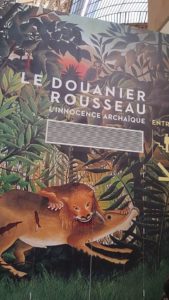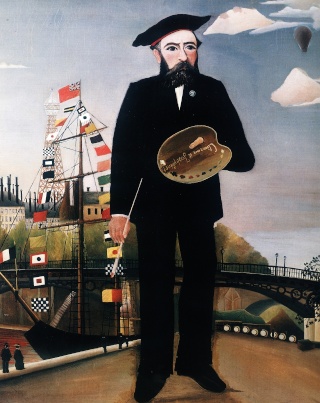
- On 2016-03-26
- In blog
- Tags
Le Douanier Rousseau
In this month of March 2016,the beautiful musée d’Orsay devotes a beautiful exhibition to a very original painter from the 19th century in France : Le Douanier Rousseau.
The exhibition has chosen to represent the genuine work of this autodidact painter under the title of “the archaic innocence”.
The “little art seeker” has seen the exhibition for you and was fascinated by his gorgeous “jungles” but it’s hard to sum up a man’s work in a few words , so let’s start by the beginning!
The man was born in a modest family and was “a sunday painter”(sparetime painter).
He was employed by the Paris city toll and was nicknamed “douanier”(customs officer)by one of his close friends.He didn’t follow any painting classes but had masters who influenced his style and whom he copied the great works :the most famous being Jean -Léon Gérôme and William Bouguereau,whose “flesh tint”he admired.
In fact ,he totally created his own style very far away from the strict standards of the academic painting of the 19th century.
The exhibition starts with a self -portrait of the artist called “Myself,portrait landscape ,detail 1889-1890.
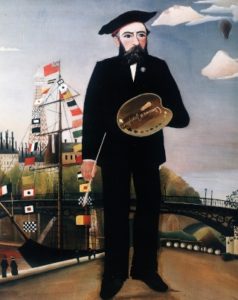 On this portrait le Douanier has chosen to represent himself as an artist with his palette and his brush .The painting is funny because his body seems giant comparing to the small silhouettes in the distance.
On this portrait le Douanier has chosen to represent himself as an artist with his palette and his brush .The painting is funny because his body seems giant comparing to the small silhouettes in the distance.
He presents himself as an independent painter , the” independants” were at the time the painters rejected by the academic salon of the Parisian microcosm.The impressionists were at the time the rejected ones from this salon and had created their own called”le salon des refusés”(the rejected ones’s salon) .
Rousseau very much influenced by the Italian primitive masters of the Renaissance such as Ucello has chosen to represent himself in a parisian landscape with the Eiffel tower recently built , symbol of the modernity of the city .
Rousseau presented himself as the man who invented “the portrait landscape” and he will repeat the exercise with two famous portraits representing successively the orientalist Pierre Loti wearing a red tarboosh ,in a landscape with chimneys of factories that announced the industrial revolution already transforming the french landscape and the poet Apollinaire with his lover “Marie Laurencin”in a kind of garden of heaven , amid a luxuriant nature. Apollinaire is holding a writer’s quill and a roll of paper to write verses in honor of his inspiring muse.
If you have a close look to the paintings , you might think that Rousseau didn’t know the perspective laws and the proportions because the characters have once more a kind of monumentality and also stiff postures and yet we know that the artist would take exact measurements of his models’ faces and worked from photographs . There ‘s in his portraits something melancholic and even mysterious that transports us into reverie.
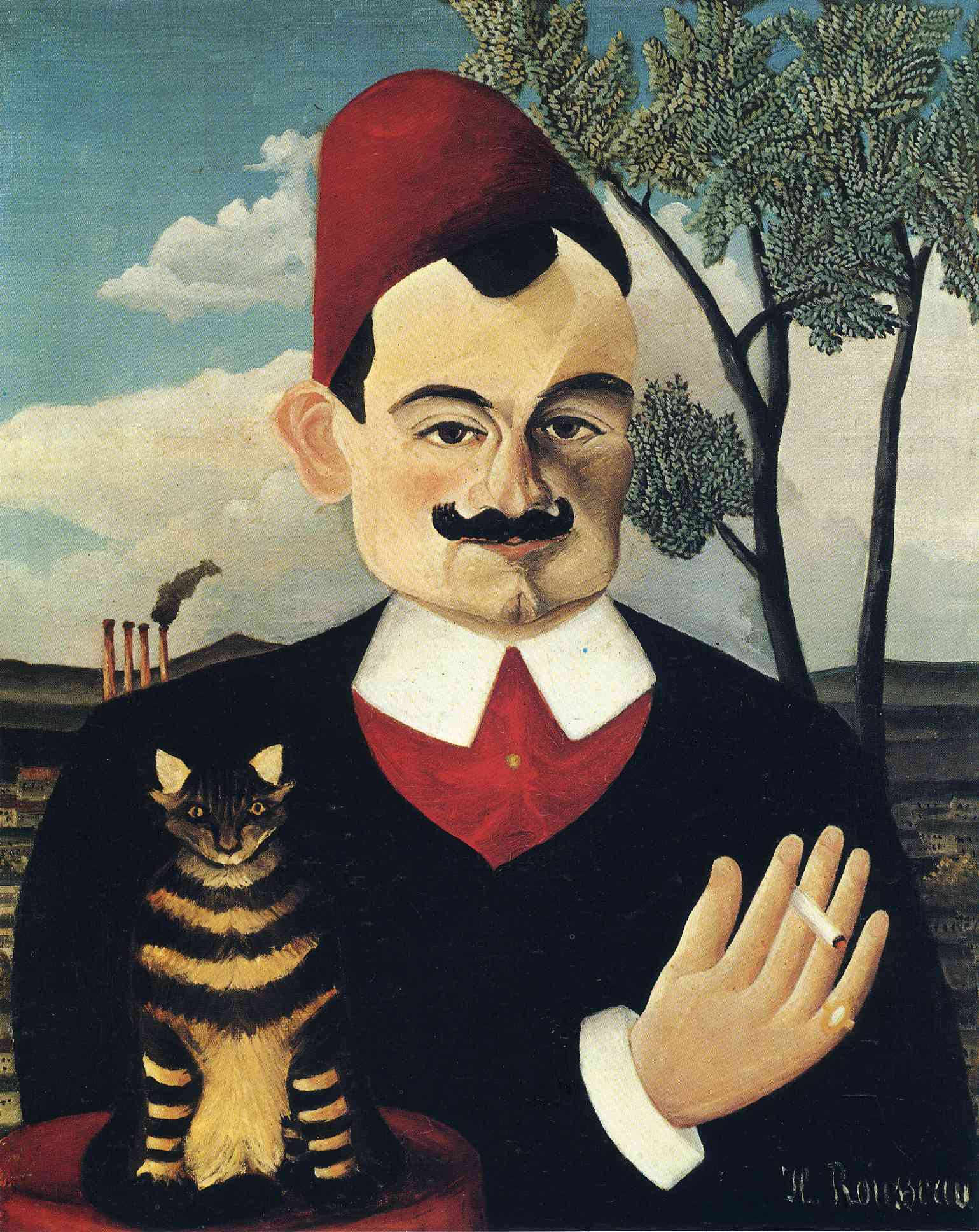
Portrait of Pierre Loti , 1906 by Henri Rousseau

The muse inspiring the poet , 1906-1909 by Henri Rousseau
These are photographies that once more inspired the painter for his representation of “the wedding” and for the Old Junier’s cart . His paintings were very much criticized by his contemporaries who thought that he really had a childish way to paint , without respecting the elementary basis of perspective and aligning his models face on.
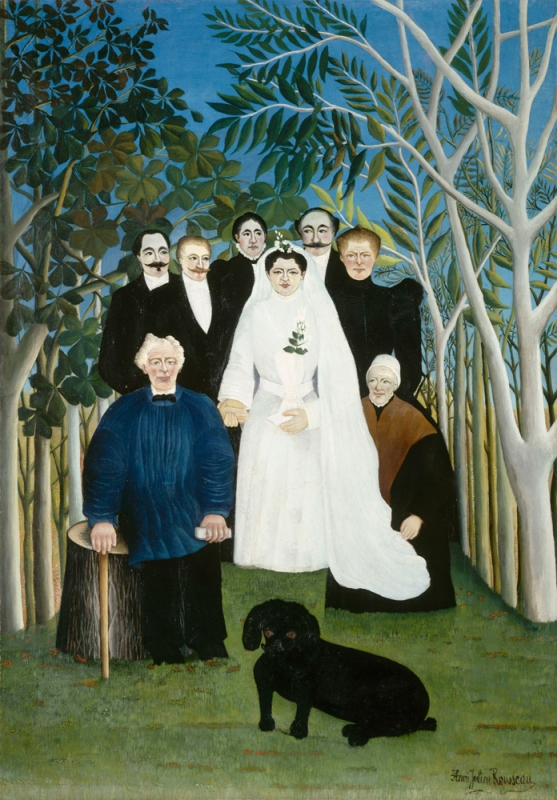 The wedding c.1905 by Henri Rousseau
The wedding c.1905 by Henri Rousseau
In the painting above ,Rousseau likes to introduce strangeness in the landscape. The bride seems to be floating in the air and the little black dog seems oversized and leads the eyes towards the middle of the canvas.
The sky is incredibly blue and the ladscape itself seems unreal with the trees forming a kind of frame around the characters. All this disharmony is delibaterely chosen by the painter to create an odd and imaginary world that seems totally coming straight out of Rousseau’s imagination.
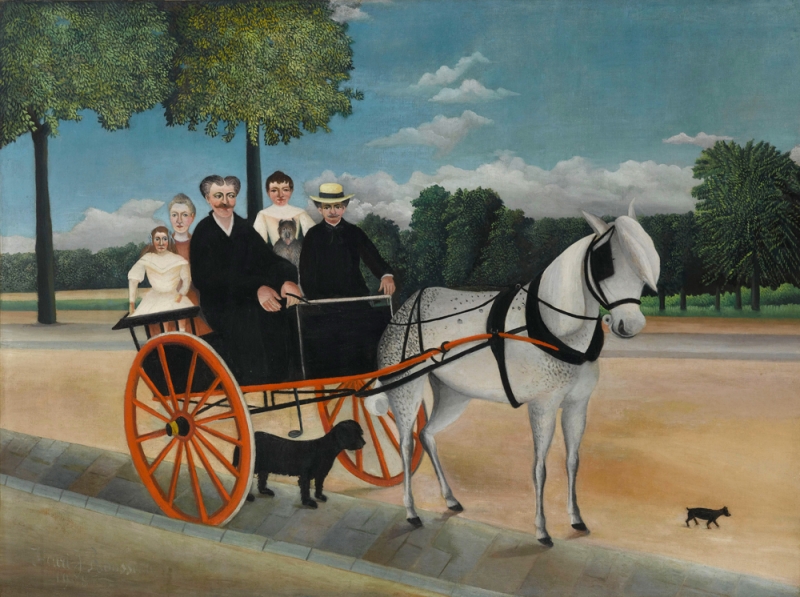
Old Junier’s cart by Henri Rousseau , 1908
Portraits of children are also present in the artist’s works but are very scarce and are the most disturbing and fascinating figures, he ever realized !
Why?Because the children he has represented have melancholic eyes and have disproportionate legs that make them resemble sculptures .
In his portrait called “to celebrate the baby” the Douanier shows us a huge baby who carries his white dress , full of bunch of flowers, uncovering sturdy legs and staring right into the viewver’s eyes emotionless!
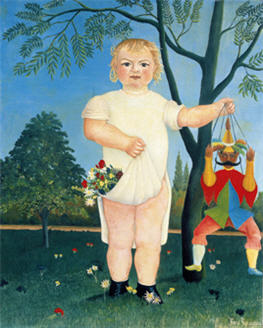
To celebrate the baby,1903 by Henri Rousseau
Rousseau’s children don’t live in a preserved world . They have puzzled looks and their bodies are represented as in “child with a doll” in the Egyptian style with the upper part of the body seen face on and the legs seen from the face.
Both of them hold their toys in an awkward way and seem a little bit like monsters directly issued from a fairground booth stage as it existed in Paris in the 19th century!
<imgsrc=”/wp-content/uploads/2018/01/1311070-Henri_Rousseau_lEnfant_à_la_poupée.jpg” class=” aligncenter” alt=”Afficher l’image d’origine” width=”219″ height=”295″ />
Child with a doll, 1904-1905 by Henri Rousseau
They will inspire the painter Pablo Picasso for his portrait of his daughter Maya in which the little girl seated with her doll ,seems totally cut off in a silent dialogue with her doll.

Portrait of Maya with her doll,1938 by Pablo Picasso
Rousseau has other motives of inspiration than children. One of his most famous painting will present his own vision of the war and is called”war or the ride of discord”. It will be shown for the first time in 1894 in Paris at the salon des indépendants . It was at the time very disturbing for the public because it was both conventional in the choice of the subject and revolutionary in its allegorical choice of the characters represented.
Rousseau loved the academic painting of his time which illustrated the great historical scenes on huge canvases with tons of paint to impress the audience.
The originality of his canvas once more comes from the fact that he chose a terrible event in French history:the Franco-Prussian war of 1870-1871 and illustrated it in a symbolic way that will inspire years later the symbolists painters and in a certain way Picasso in his famous painting of the Spanish war Guernica.
War is an ageless and agressive woman ,brandishing a sword and riding on a flying horse.Once more there’s no realistic perspective and the bodies represented have massive looks and yet the message conveyed by the canvas is one of the greatest pictorial antiwar manifestoes.

War or the ride of discord c.1894 by Henri Rousseau
Writing about his work and speaking about war , Rousseau said “She passes terrifying, leaving despair ,tears and ruins everywhere .”
Rousseau was a dreamer who never left Paris and imagined exotic worlds in his jungle paintings .The end of the exhibition is devoted to these huge canvases where birds,lions and tigers that he observed for hours in the natural history museum but also in exotic pictures albums for the general public are transposed onto canvases full of colors and details!!
the hungry lion ,1898 by Henri Rousseau

Horse attacked by a jaguar ,1910 by Henri Rousseau
Rousseau’s jungles are idyllic and poetic ,the white horse attacked by the jaguar symbolises the terrible struggle for life and the dangers that expect anyone in the jungle.The eyes are totally immersed in the luxuriant nature and the palette of the greens seems endless.
The last two paintings of this gorgeous exhibition gives us free access to oniric worlds that will inspired the surrealists in the following century .
The dream and the snake charmer have similarities:a naked woman in a luxuriant nature ,taming the wild animals ,she is the goddess of a mysterious world ,imagined by a dreamer who thought during his lifetime he was not made for his epoch and found happiness in creating his own universe.
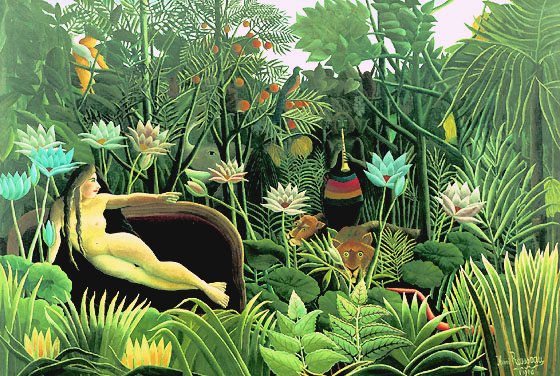
The dream , 1910 by Henri Rousseau
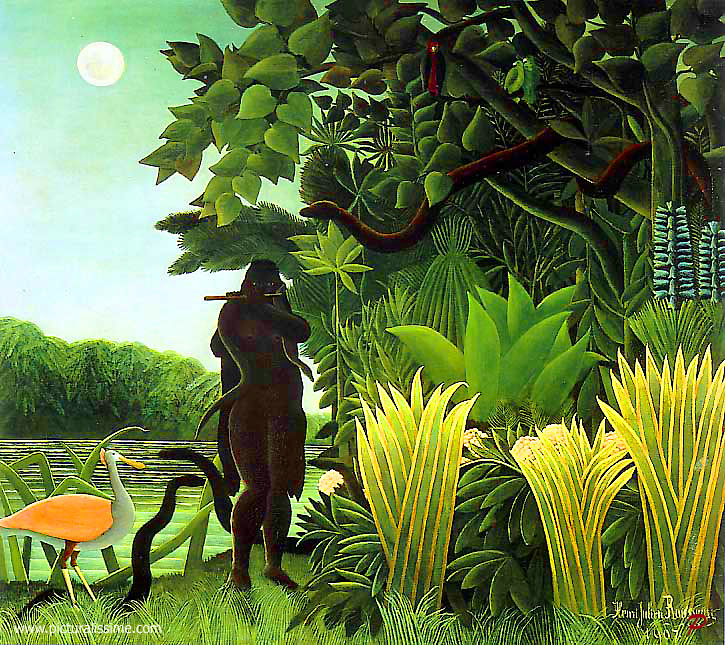
The Snake Charmer,1907 by Henri Rousseau
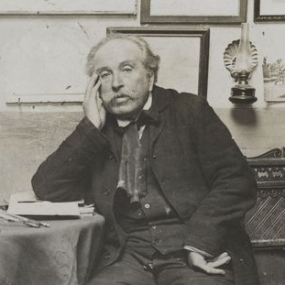
Henri Rousseau dit “le Douanier Rousseau”
So if you visit Paris in the weeks to come , go and see the beautiful exhibition devoted to this incredible and non academic painter!!!


